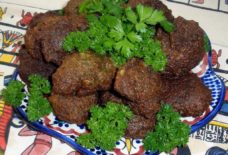SOURCE: THE GUARDIAN
BY: ANSHEL PFEFFER
In 2015 a BBC2 documentary, Children of the Gaza War, brought a flurry of complaints. One of the Palestinian children interviewed said in Arabic that “the Jews” are killing Palestinians. However, the English subtitles translated this as “Israel is massacring us”. Many Jewish and Israel-supporting viewers accused the BBC of intentionally downplaying Palestinian antisemitism. The documentary’s maker, Lyse Doucet, stood by the subtitle, saying: “We talked to people in Gaza, we talked to translators. When [the children] say ‘Jews’, they mean ‘Israelis’. We felt it was a better translation of it.” Israel has existed around Gaza for nearly 70 years and children there are still calling their Israeli neighbours Jews.
Ian Black opens his excellent new history of the Israel-Palestine conflict, Enemies and Neighbours, with a note on terminology titled Language Matters. He points out that in colloquial Arabic used by the Palestinians, Israelis are still often called “Yahud” – Jews. On the other hand, while until 1948, the year of Israel’s establishment, the term “Palestinians” usually referred to all inhabitants of Palestine, including Jews, it only gradually came to be used to describe one side in the conflict. Only in recent decades have Israelis started to differentiate their next-door neighbours from the rest of the neighbourhood, calling them “Palestinians” instead of the more amorphous “Arabs”. Words matter. They are the building blocks of the contradicting narratives each side has continued telling themselves, and the world.
Palestinian-Israeli writer Odeh Bisharat is quoted: “If there is no shared narrative of the past, then let us at least write one of the future.” But as Enemies and Neighbours expertly describes, Israelis and Palestinians have spent the last century escaping each other’s narratives and are still doing nothing to write a new one.
A veteran reporter and former Guardian Middle East editor, Black spent decades immersed in both Israeli and Palestinian societies, fluently speaking their languages. He notes how the Hebrew and Arabic used by the warring communities, as well as their culture and daily lives, have been affected and formed by the conflict. How the Jews, who began to arrive in the late 19th century, or “return” as they would have it, gradually coalesced into a new Israeli society. And how the Arabs living in Palestine began to define themselves as a distinct national group, in a large part as a reaction to the Zionist arrival and entrenchment.
As Black notes, “The Israel-Palestine issue has a strong claim to be the most closely studied conflict on Earth.” He justifies adding another volume to the bulging bookcase, not only by bringing us up to date on the latest developments and new research, but – a rarer thing – giving equal attention to each side and charting how the different Palestinian communities were created. Following Israel’s war of independence in 1948 and the Nakba – the uprooting of 700,000 Palestinians from their homes – war, exile and occupation led to separate evolutionary paths. These communities include the Palestinians who remained under Israeli jurisdiction, those who lived in the West Bank, the Gaza Strip and in refugee camps, and émigré communities in surrounding Arab states. The interplay among these groups and between them and Israel is a dynamic often overlooked.
Enemies and Neighbours will not make easy reading for partisans on either side. Narratives are meticulously broken down and reshaped by inconvenient facts. Black uses an array of sources highlighting how, from the start of the Zionist initiative, neither its ideologues nor the majority of the early Jewish settlers had any interest in building a nation together with the native population. While he chooses not to take a clear position in the historical debate over whether the Palestinian displacement of 1948 was premeditated ethnic cleansing, he does describe how in many places the banishment of communities and the destruction of their villages was intentional. His account of the second-class status of Israeli-Palestinian citizens and of daily life for the millions who have lived under Israeli military rule since the six-day war of 1967 is detailed and harrowing.
But the Palestinians in this book are far from docile victims, devoid of their own agency. They were a large majority and had support from the neighbouring Arab nations. They squandered the upper hand largely through their own mistakes. Black describes how the early Jewish settlements were built on land that Palestinians, including secretly some of the most strident nationalist leaders, willingly sold to the Zionists (a chapter in their history, Black notes, the Palestinians have yet to confront). How they were quick to resort to murderous violence against the Jews from a very early stage in the conflict, and how their own disunity, which often took the shape of internecine killings of rivals and “collaborators”, was a key factor in their downfall.
Unlike previous histories of the conflict, this pays less attention to the diplomatic affairs of the world powers that played a role in the region and in Arab-Israeli relations. For some readers, this will feel like a drawback, but its relentless focus on Israelis and Palestinians, to the near exclusion of other players, is one of its strengths.
The greatest myth of the conflict is that both sides are the proxies of much greater powers. But in recent decades, most of the Arab nations have quietly accommodated Israel’s presence, engaging in not-so-secret alliances against joint enemies. The world powers have focused on other, more pressing, events in the region – Iraq, Syria, the rise and fall of Isis. The Israel-Palestine conflict remains one between two enemies who refuse to accept their fate to live as neighbours.








